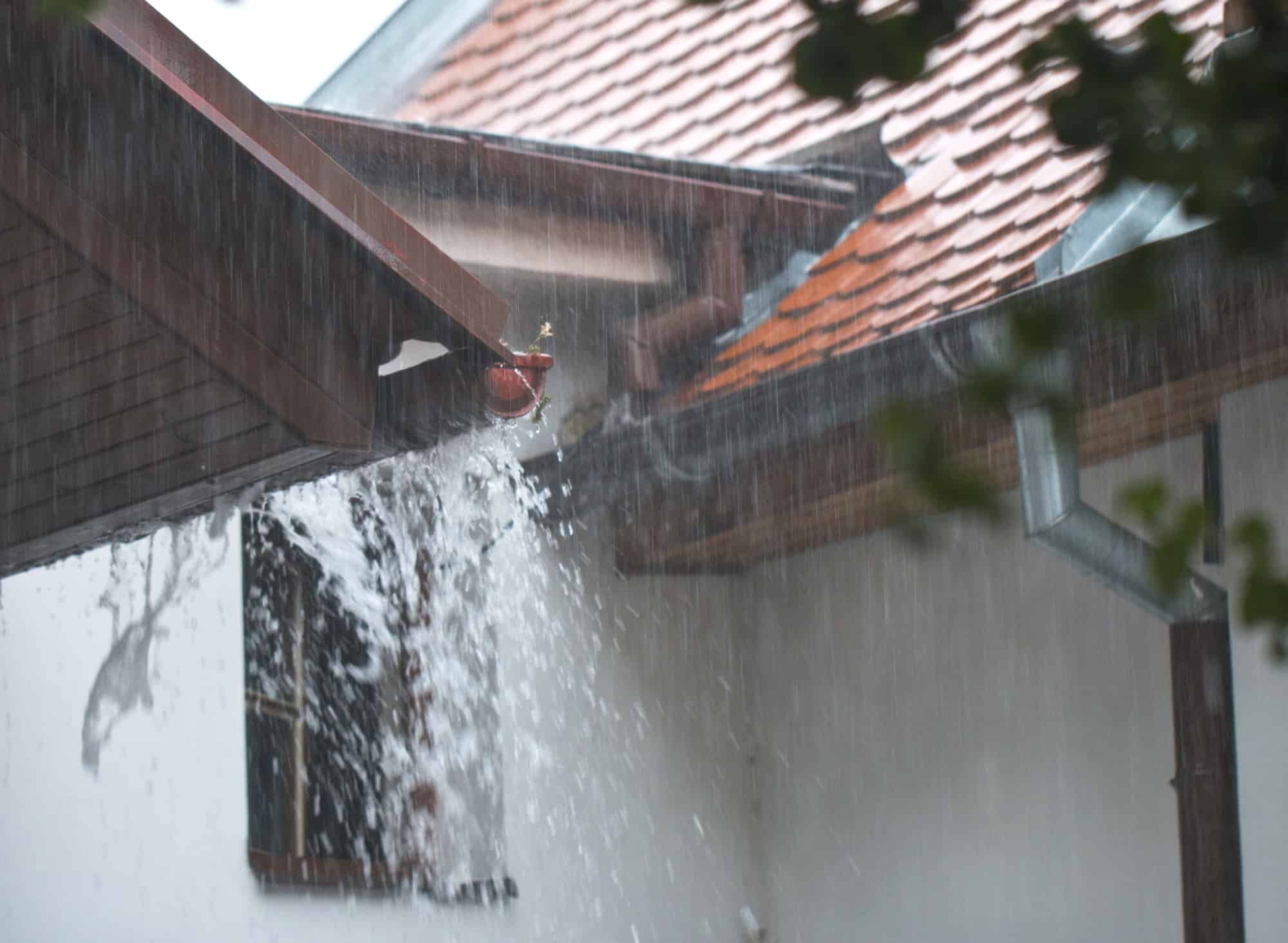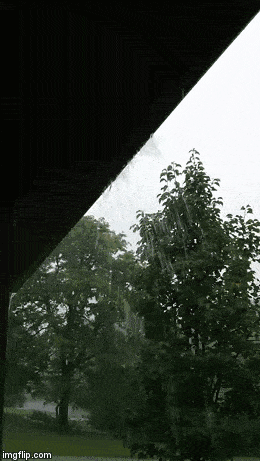Gutters are a quintessential part of your roof system. The better your gutters do their job, the less water accumulates on your roof and around your home. This can cause long-term damage to everything from your siding to your foundation!
Depending on the layout of your roof, you may notice heavy precipitation can cause liquid water rainwater to start leaping over your gutters and falling to the ground. Not good!
Large amounts of water splashing down on plants, grass, or dirt can create a real mess. There are a few solutions that we have to help you with this issue. Stay tuned and learn how to keep rainwater from leaping over your gutters.
Why Is It Happening?
The most logical place to start is to find out why this is happening in the first place. There are three causes here and we’ll start with the one most easy to fix.
Blockages By Debris
Leaves, mud, and other debris can be a significant obstacle for flowing water. If you haven’t already, check your gutters for the aforementioned muck to see if that’s the cause. For most folks, it is!
If you find the muck, thoroughly clean it by hand or with a pressure washer. Then wait for the next rain to see if that fixed it.
For a permanent solution, install a gutter shield to keep the debris from collecting inside your gutters. However, if you’ve cleaned out the gutters and are still experiencing overflowing gutters, read on for other possibilities.
Not Enough Downspouts
When you don’t have enough downspouts, the water cannot flow out fast enough. The water gets backed up at the downspout, and then that backup continues along the roof-line.
This puts a ton of pressure on your gutters, and it is a problem that you don’t want to leave for very long. Sometimes the addition of a downspout can solve this issue quickly.
If you already have several downspouts make sure that your gutters are level and that the water is flowing to each downspout evenly. Large puddles at the bottom of one side and nothing at the bottom of the other downspout is a strong sign that this is your issue.
However, if you’re confident that your downspouts are fine, there’s one more possibility.
Poor Gutter Design
If your gutter system was not designed properly, there are usually small adjustments you can make to rework the system and make it more effective.
Not all areas of a roof are created equal. As time goes on, you’ll observe that snow and rain accumulates in certain areas more readily than others. If this is the case, you may need to add a small section of downspout that connects your second story gutters directly into your first story gutters. This will eliminate all of the water from the second story getting dumped on the roof of your first story, and it will instead run the water directly into the gutters.

Without that, the water would simply flow from the top downspout and cause an overflow in the area.
The Problems Inflicted By Overflowing Gutters
If you are not sure of the issues caused by allowing water to flow over your gutters continually, we’ll go through the ramifications (Hint: it’s not a good thing).
Foundation Damage
If you let water flow on the walls around your home, they will eventually become soft and be subject to damage. Gutters must divert water out and away from your home to ensure that your foundation is protected.
Roof Leaks
Naturally, if the water is flowing over the top of your gutters, it also means that it is sitting on your roof. The longer you let water sit on your roof, the higher the chances of developing roof leaks.
Landscaping Disasters
All plants benefit from an extra bit of water from time to time. With that said, most do poorly with buckets of water being poured on them.
Landscaping can be expensive and difficult to maintain. If your gutters are not working correctly, you could take out a significant amount of your garden in one rainstorm. It’s certainly not worth it.
Basement Issues
Even if you don’t develop a basement leak, you may start to get issues with mold and mildew in your basement because of the extra water accumulation.
Similar to the foundation issues, we discussed your basement is at risk when the rain is falling over the tops of your gutters.
Who Should I Call?
A roofing and gutter specialist will be able to come out and diagnose the issues on your roof. They will run an array of tests to see what is causing the issue. The results shed light on which adjustments you need.
If you think you can fix this problem yourself, just try to investigate the cause before moving up to the gutters to make changes. If you go outside during a rainstorm, you should be able to see (from the ground) if it is an issue with the design or if you simply don’t have enough downspouts to accommodate the water flow.


